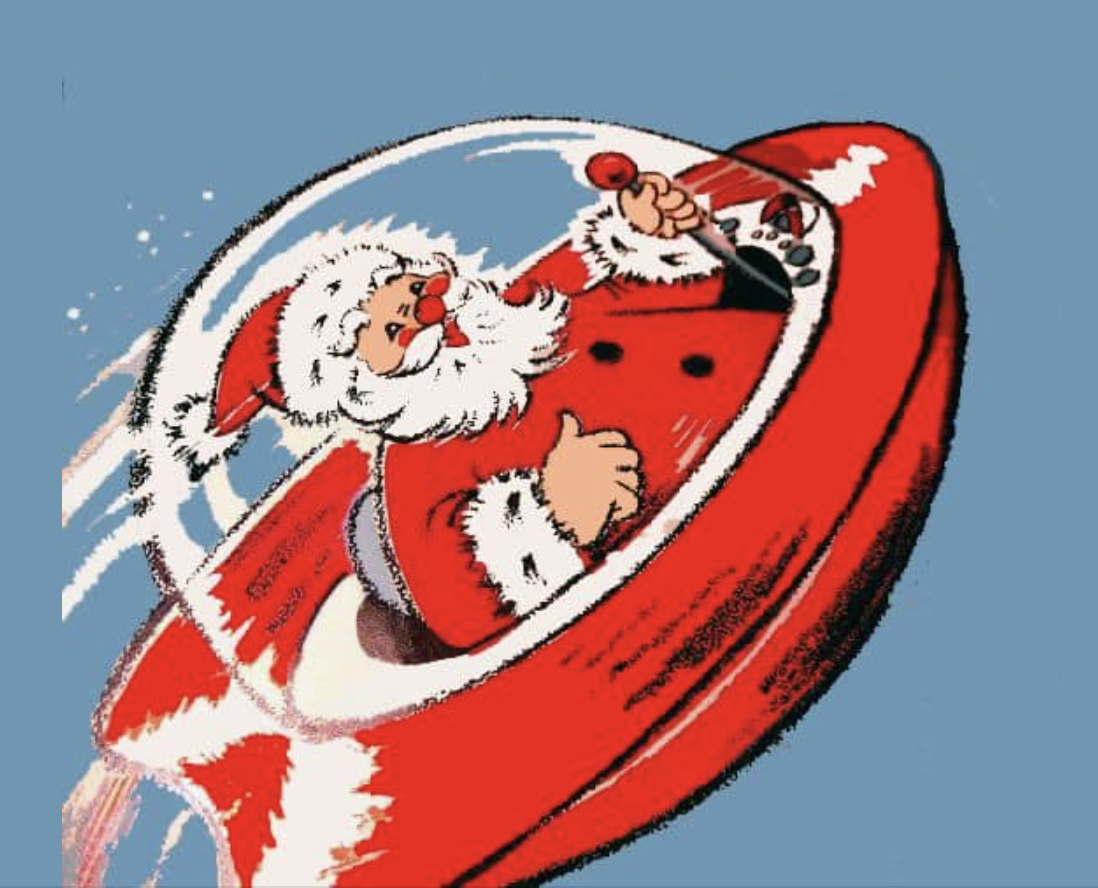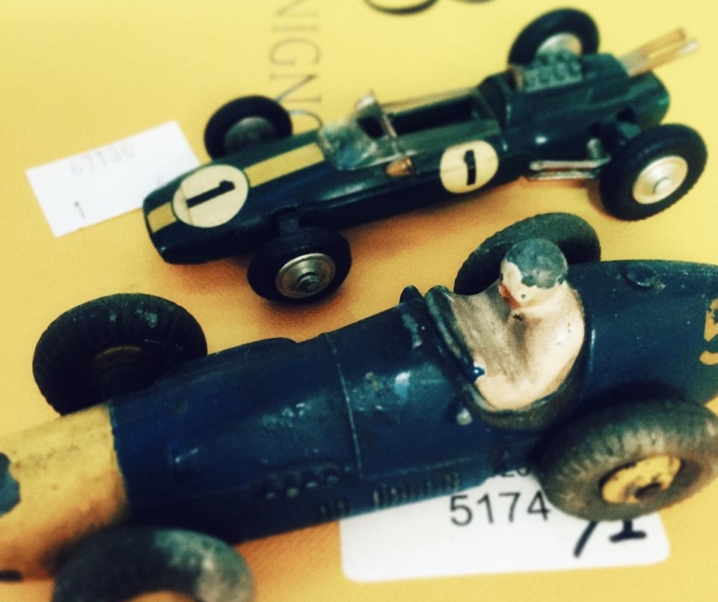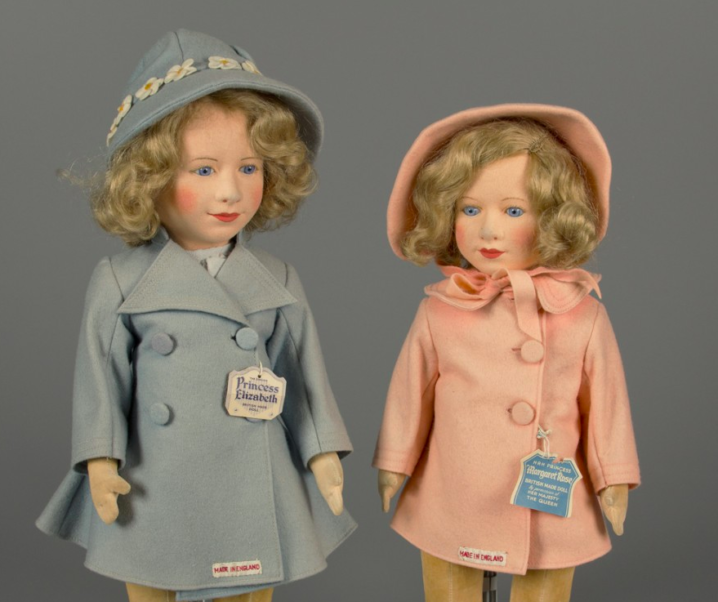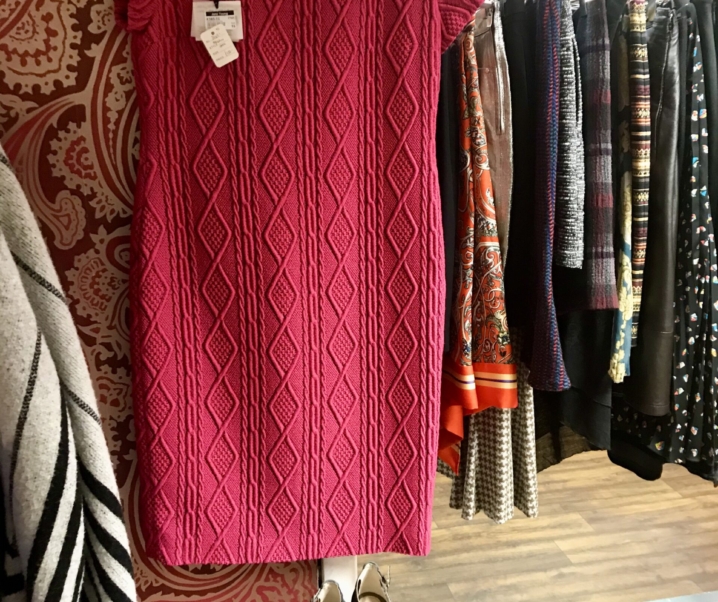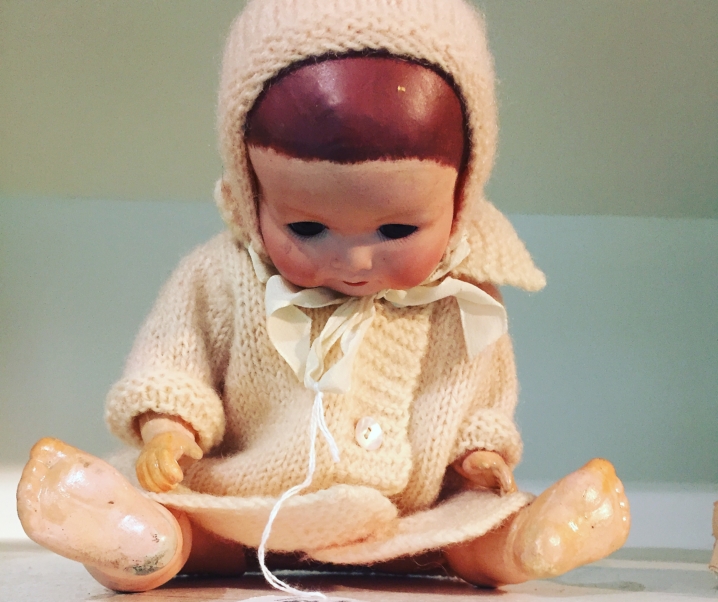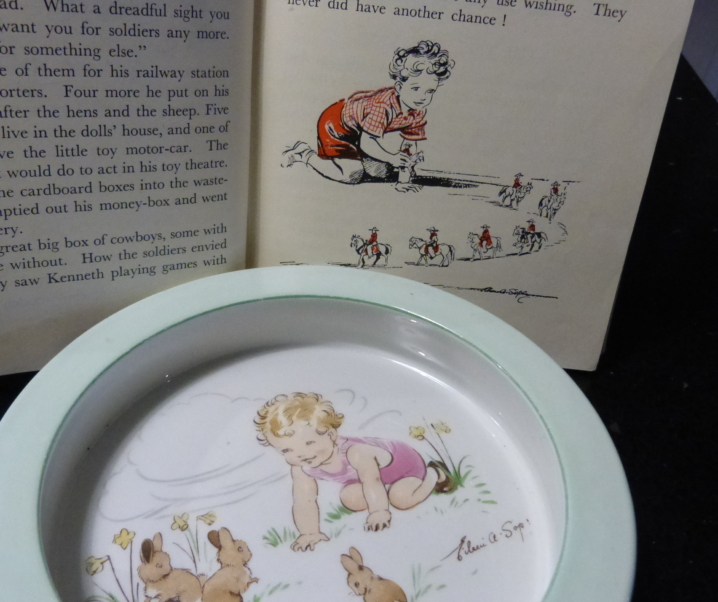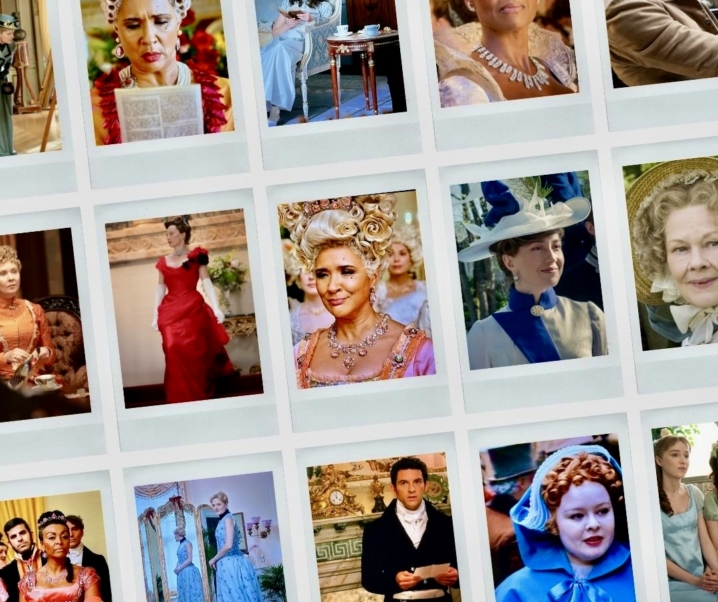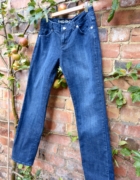Picture; ‘Atomic’ Christmas card from the 1950s
The other day, I heard a family on the radio appealing to anyone who could donate/sell vintage decorations as they’d decided to have a full-on ‘1970s’ Christmas. As someone who was a child in the 70s (aged six when the decade started) I can only assume the family wanted to decorate from the 1970s rather than force their children to spend a day with only three TV channels and a tangerine from the toe of a stocking for entertainment.
I’m not sure how many people responded to this appeal but – if you fancy a stroll down memory lane yourself this December – you really don’t have to make a national radio appeal for retro decorations. The shops are stuffed with 60s/70s-inspired ornaments. You can find 1960s space age ornaments in John Lewis, frosted, white and silver trees are as ubiquitous as the noble pines and Christmas 2023 baubles are just as colourfully ta-dah! as anything your nana bought from Woolworths in 1973.
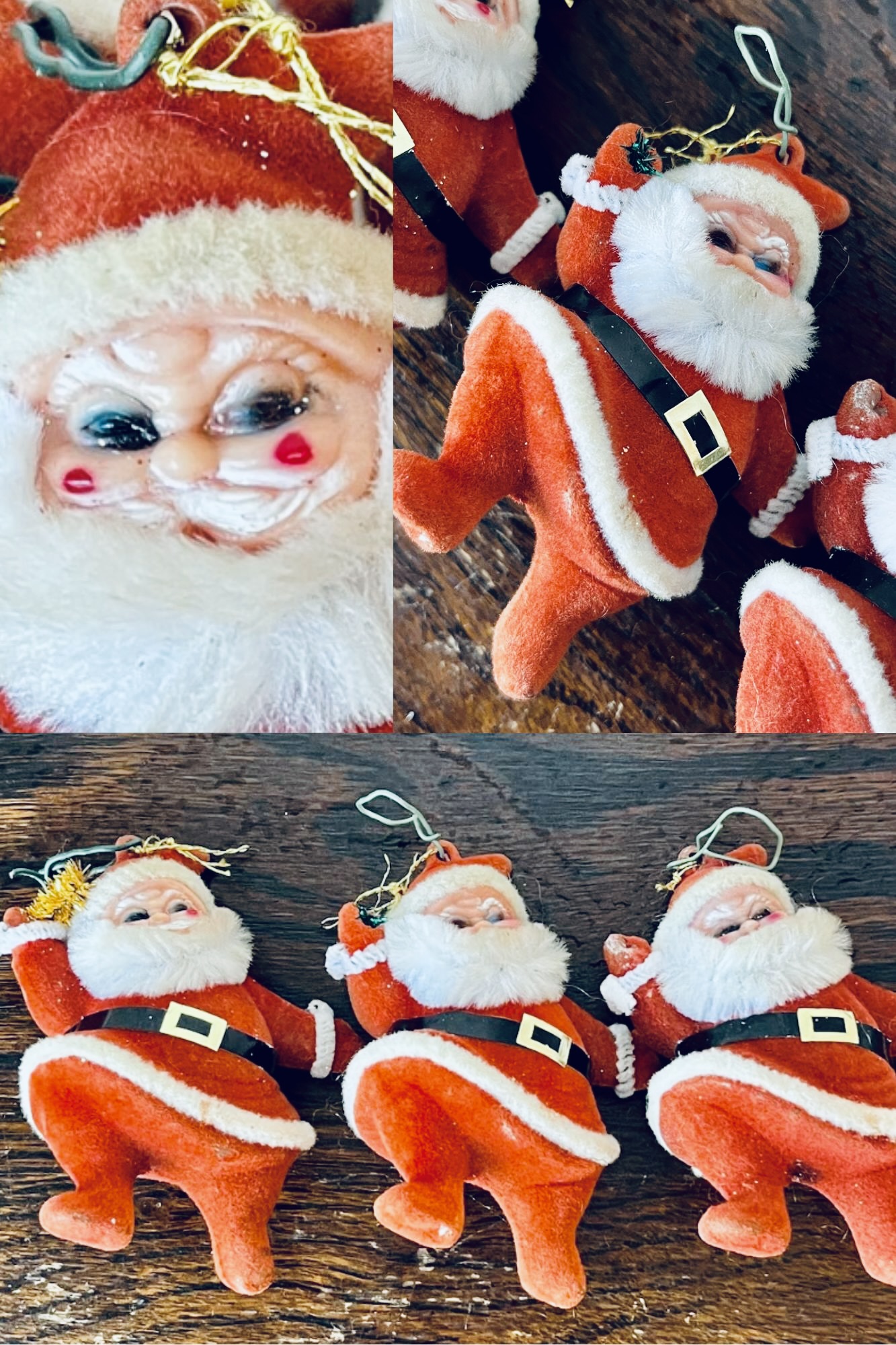
Obviously, it’s better by far if you do have granny’s actual decorations in your attic. Incredibly, even a tatty old artificial tree from Woolies (see below) could be worth a few bob. As for those flocked Santa Claus figures which cost a few pence in the 1970s…the same trusty, musty festive figures are worth more than £20 on Etsy (see above).
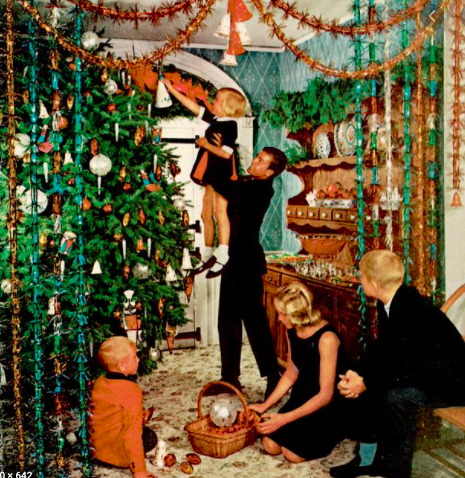
“Vintage Christmas decorations are definitely having a moment,” says designer and vintage curator Jill Rinner on her website Bungalow 47.
“It seems like everyone is looking for that perfect, unique piece to add to their holiday decor. And what could be more unique than a vintage find? I love using collections for vintage Christmas decor. It really adds a personal touch to holiday decorating.”
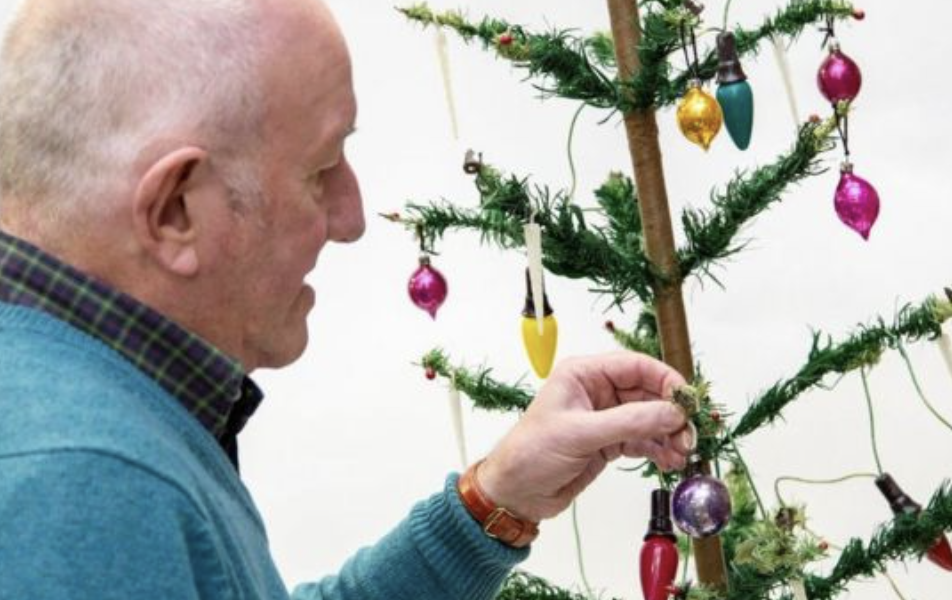
Whilst I’m all for the refined elegance of the Nordic-style Christmas we’ve been enjoying ever since IKEA came to town, it’s great to see the return of the ever-so-slightly tacky decorations which we 60s/70s kids loved (and our parents tried desperately to hide) like flock Santas, celluloid cherubs and resin reindeers.
To celebrate the modern love for Christmas past – Jolly Volley has cobbled together a little back-ground history on decorations that were in everyone’s homes in the 50s/60s/70s largely because they were so cheap and cheerful.
But hold onto your tinsel fellow ‘baby boomers’ as your childhood decorations are still cheerful but they sure ain’t cheap. I’ve included a guide to modern days values (based on eBay sold prices in Nov/Dec ’23) with a firm prediction that you will find yourself saying ‘We had one of those’ shortly followed by ‘How much?’ and ‘I wish I still had it’.
That’s the wonder of – a box of shiny baubles from Woolies –
Legend has it that young Frank Woolworth was less than impressed when a travelling salesman tried to interest him in some hand-blown German glass ornaments for his 5c store in Pennsylvania. His complaint?
They don’t do anything.
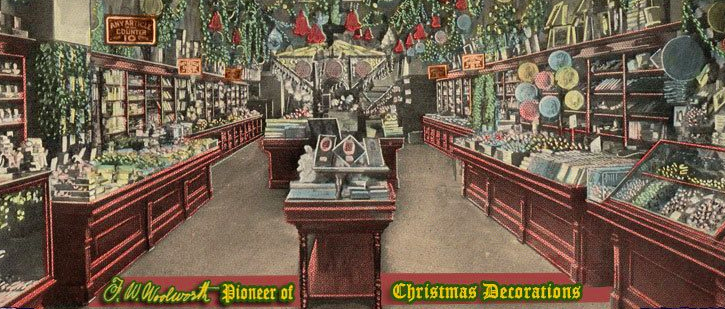
Frank reluctantly agreed to have a case on sale or return. He was amazed when they sold out in a day; earning a 3c profit on each bauble.
According to an article posted on the Woolworths Museum website, five million baubles were sold between the years 1880 – 1939.
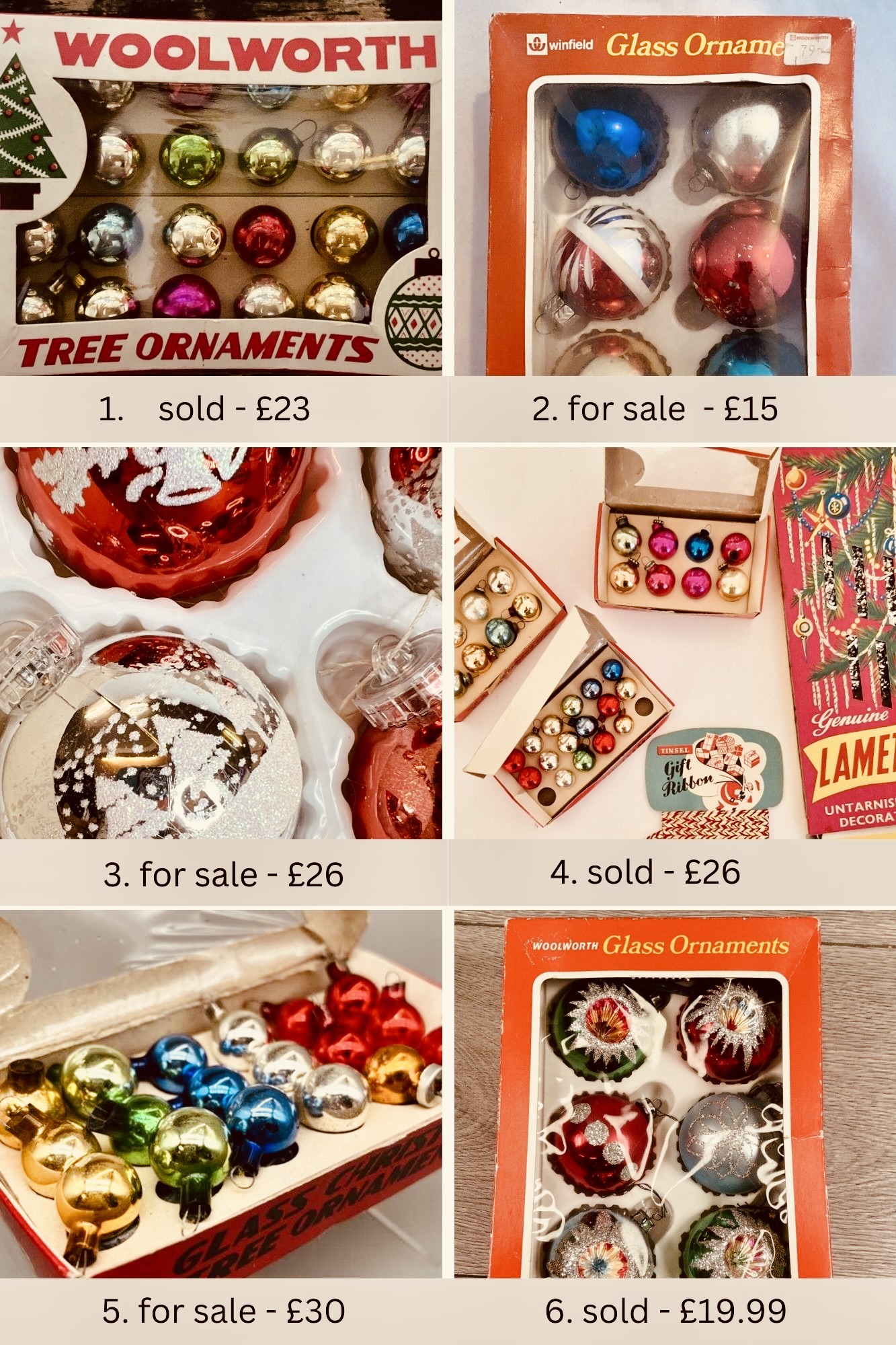
By the time Woolworth opened a store in Britain (Liverpool; 1909) the public were desperate for affordable versions of the expensive glass decorations on display in rich Edwardian households. Woolworth 1p ornaments (35p in today’s money) became instant best-sellers.
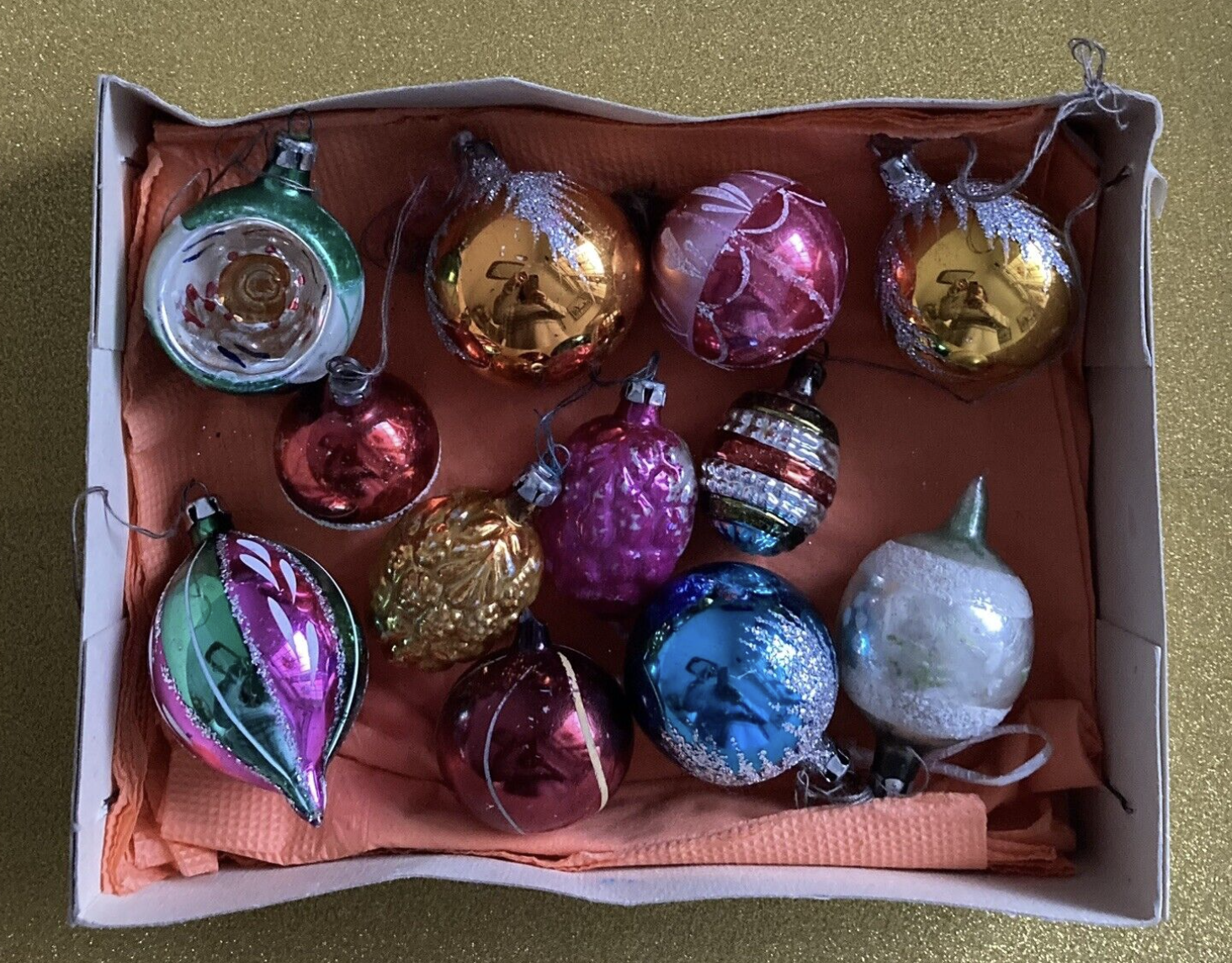
Woolworth remained the market leader in the Christmas decorations market up until the 1980s when the stores began to face tough competition from the high street, garden centres and DIY stores. When the Woolworth Group Plc was officially dissolved in October 2015, the company’s back catalogue of vintage decorations (pre-80s) were already very collectable.
Today, a very ordinary looking box of baubles – which would have cost 79p in the 70s – is being sold on eBay with a list price of £15 (see picture above). I’ve looked at quite a few sold listings and it seems people are especially keen on those super shiny baubles this year (above). At the time their bright neon, reflective surfaces were said to represent the ‘optimism’ of the post-war society. Perhaps, post-Covid, we’re similarly desperate for a bit of good cheer.
It seems fitting the magical fairy lights we know and love (give or take the odd tangle) were invented for the theatre. Physicist Joseph Swan had already perfected incandescent lamp bulbs (to replace hot and dangerous gas lights) at the Savoy Theatre and produced a miniature version for use on the dresses of the lead fairies on the opening night of Gilbert and Sullivan’s Iolanthe in 1882…and fairy lights were born.
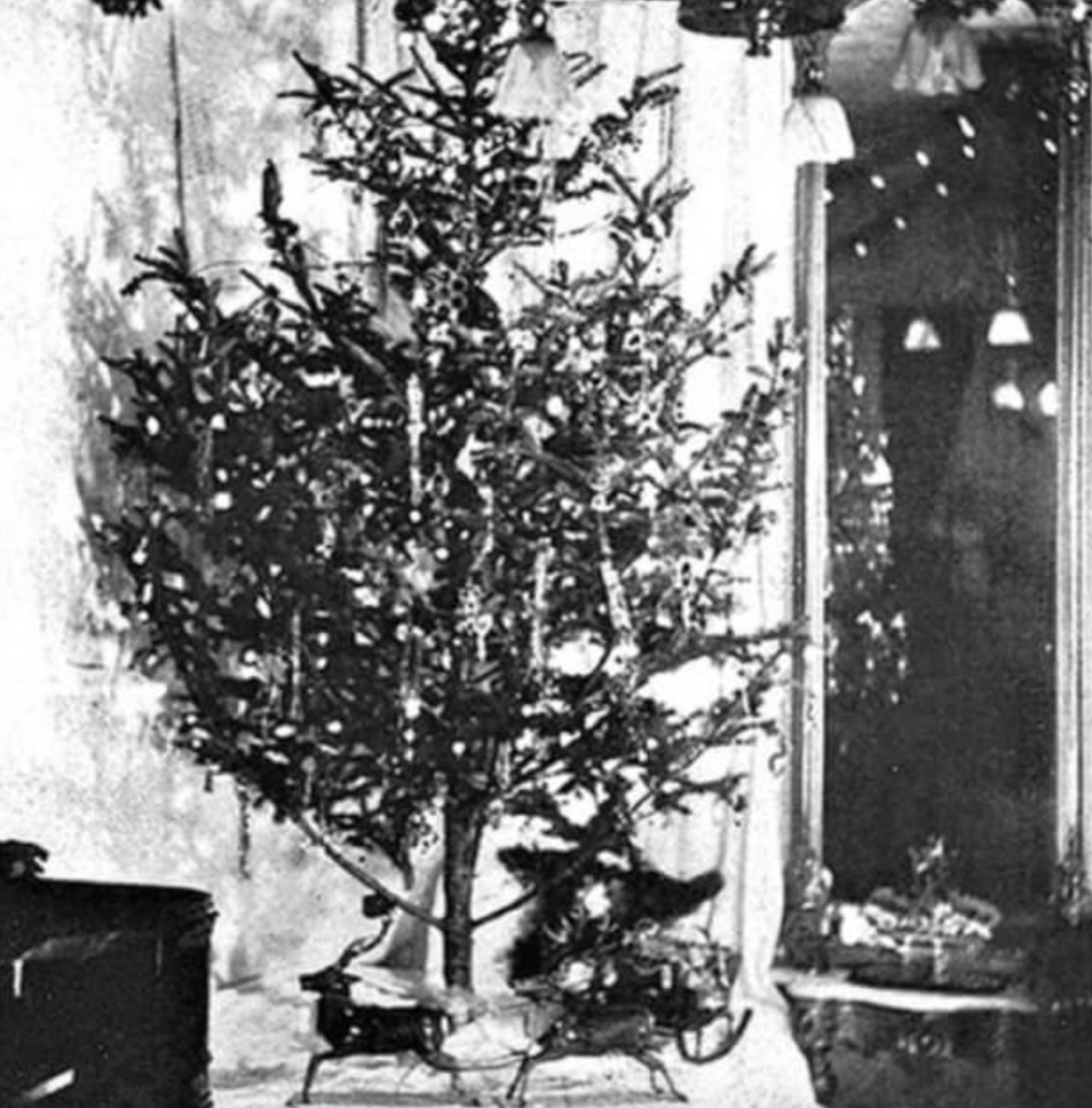
A year later, Edward ‘Hibberd’ Johnson, colleague of Thomas Edison (Swan’s US rival), put these some fairy lights around a Christmas tree as a publicity stunt to promote electricity – his tree was mounted on a rotating box in a window so passers-by could marvel at the lights. They were an instant hit.
High society families would host Christmas tree parties purely to show off their lights which could cost up to $300 (equivalent of £1500 today) as the needed both a generator and services of an electrician to install.
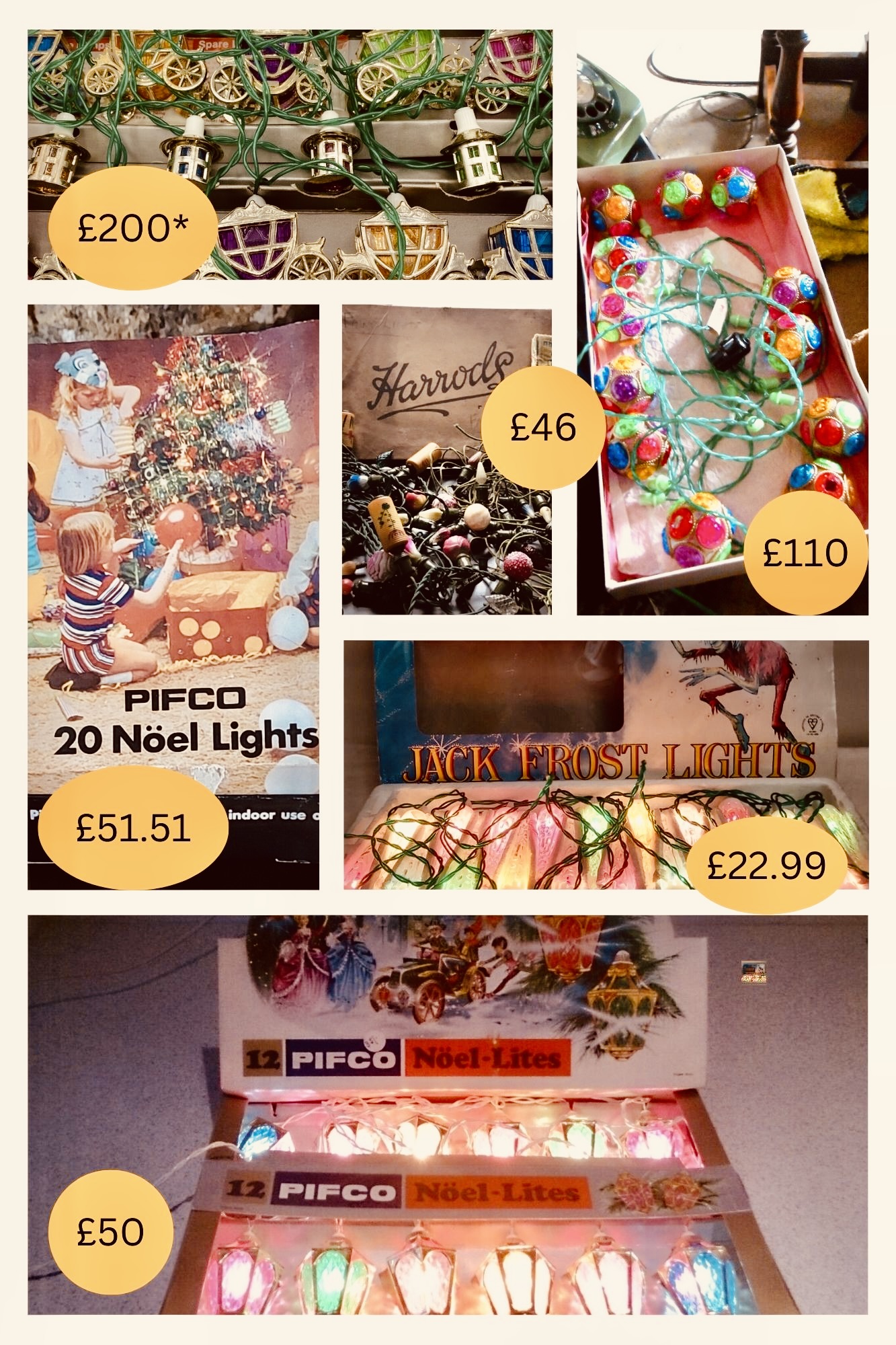
It was a 15-year old American Albert Sadacca (whose family owned a lighting business) who repurposed novelty lighting sold in his parents store to make affordable Christmas lights in 1917. The first year white ‘Christmas’ lights were available, the company sold a few hundred. The following year, they added multi-coloured lights and sold a few thousand. In 1925, the family launched the NOMA Electric Light Company. and a multi-million pound industry was born.

Today, a vintage string of working NOMA lights could cost a lot more than a modern LED-alternative (see above). Their is dependent on age, condition and novelty – collectors will pay more for bulbs shaped like figures, fruit or Cinderella carriages and lights with Bakelite or glass outer casings. Popular designs include lanterns, snowmen and candles.
If you want to buy lights, please do your research…I looked at a lot of eBay listings and saw the word ‘vintage’ or vintage ‘style’ being used for lights which been on sale in Asda just a few year ago. It goes without saying, if they are genuinely old lights, they need to be PAT-tested before use.
Putz Christmas Village
- Please don’t fall too hard for these toy villages . They were popular in the US/Germany and are rarely available to buy in the UK …but they are so darned cute, I had to include…and I have suggested an alternative so I do hope you forgive me.
You might not be familiar with the name ‘putz’ but we’ve all seen those folk artsy little Christmas villages – if only the modern versions sold in garden centres.
It was a central European tradition – the word ‘putzen’ is German for decorate or adorn – and is thought to have started in the 18th; children would collect things like ornate stones and lichen from the forest to make into miniature villages with a nativity in the centre.

In the 1900s, German settlers brought their Christmas village traditions to America and putz became hugely popular items in ‘five and dime’ stores and catalogues. Things really took off after World War I when the Japanese started producing miniature cardboard houses – largely as a container for sweets. Some bright spark (sorry) had the idea of filing the hollow boxes with light; thus illuminating the little windows and making them a perfect Christmas decoration.
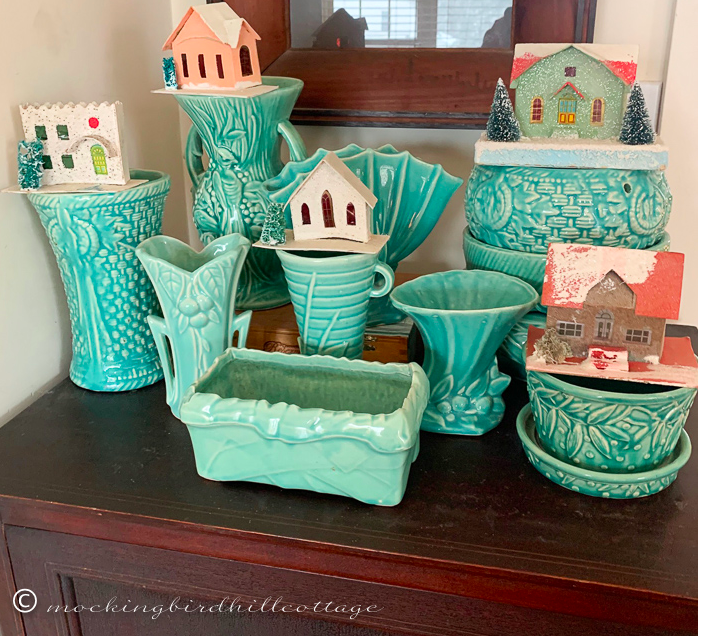
Cardboard putz houses (roofs glittering with mica snow) became so popular that the range of items is thought to extend into the thousands including castles, churches, snowmen, ice rinks and rotund elven figures often made from pine cones.
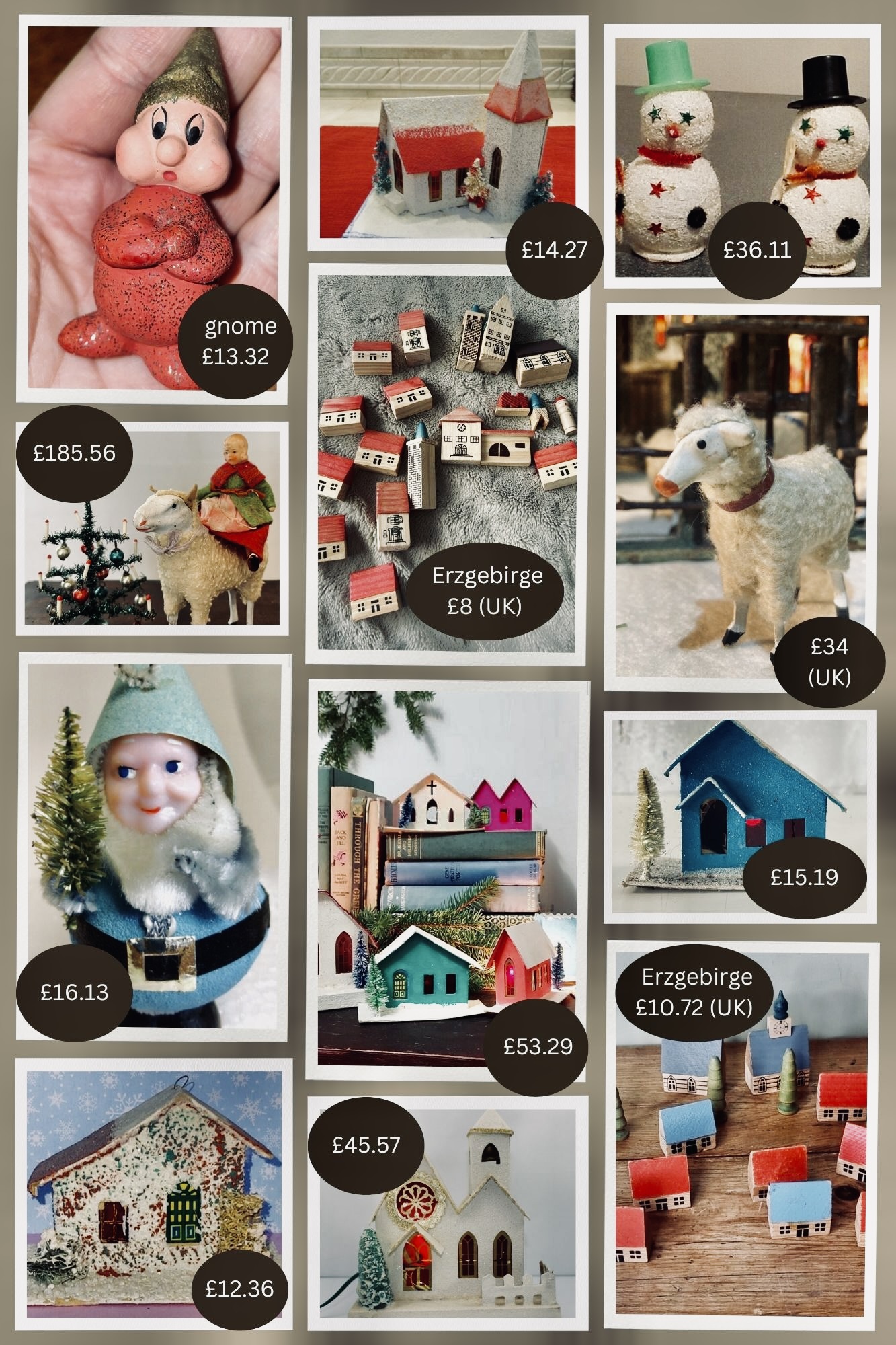
Demand finally puttered out during the 60s (I will stop with the puns, honestly) and putz villages were consigned to a dark corner of the loft.
Sixty years on, vintage collectors are once again potty about putz which means prices have rocketed. According to Etsy, the price of an original 30s Putz house can range from £10-£100. If you live in the UK…beware the additional costs. The major source of putz is the US and those dinky little houses will come with a hefty postage bill (£15-plus).
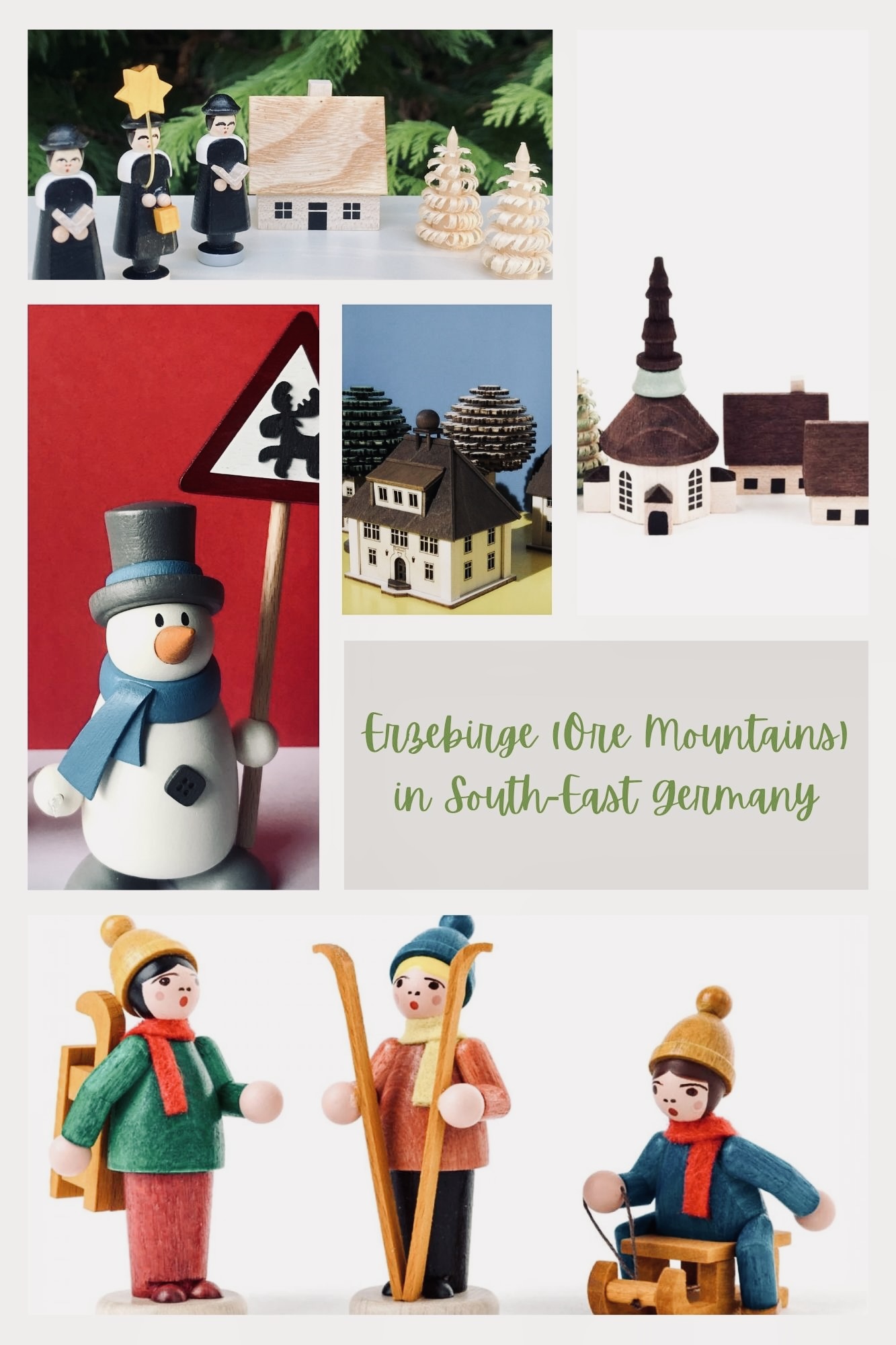
A far more affordable option are the vintage Erzgebirge Christmas figures and houses which often pop up for sale in vintage shops and online. They are still made in Erzgebirge (South-East Germany) today if you fancy a Christmas mini-break (can I come with?).

Stop press; After saying you cannot buy anything like Putz houses in the UK – this picture appeared on my Facebook timeline. Uncanny that. It is by an American company – Cody Foster & Co – but it is available from The Hambleton. I hope you are sitting down as this cardboard ‘Santa House’ has an asking price of £49 (the originals sold for 5c to 10c which is around 79p/£1.58).
Do I still want it – do you even need to ask?
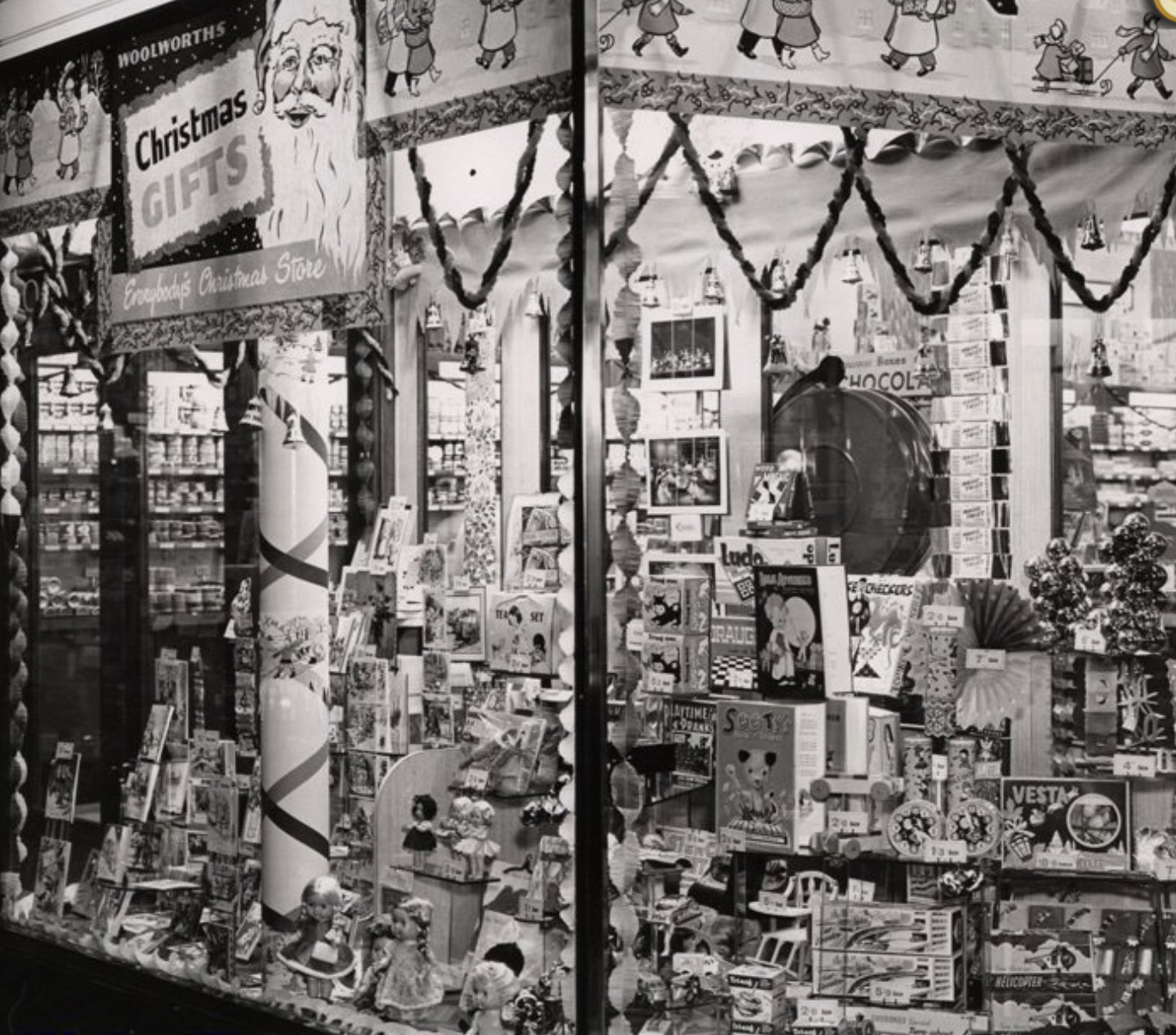
Wages were up, prices were down and shops like Woolworth were flooded with bigger, brighter, bolder (tackier?) Christmas decorations and novelties; many sourced in Hong Kong.
‘The materials used to make decorations changed in the 1950s. Plastic and nylon took the place of glass and paper became less popular,’ says a spokesperson for the Woolworth Museum.
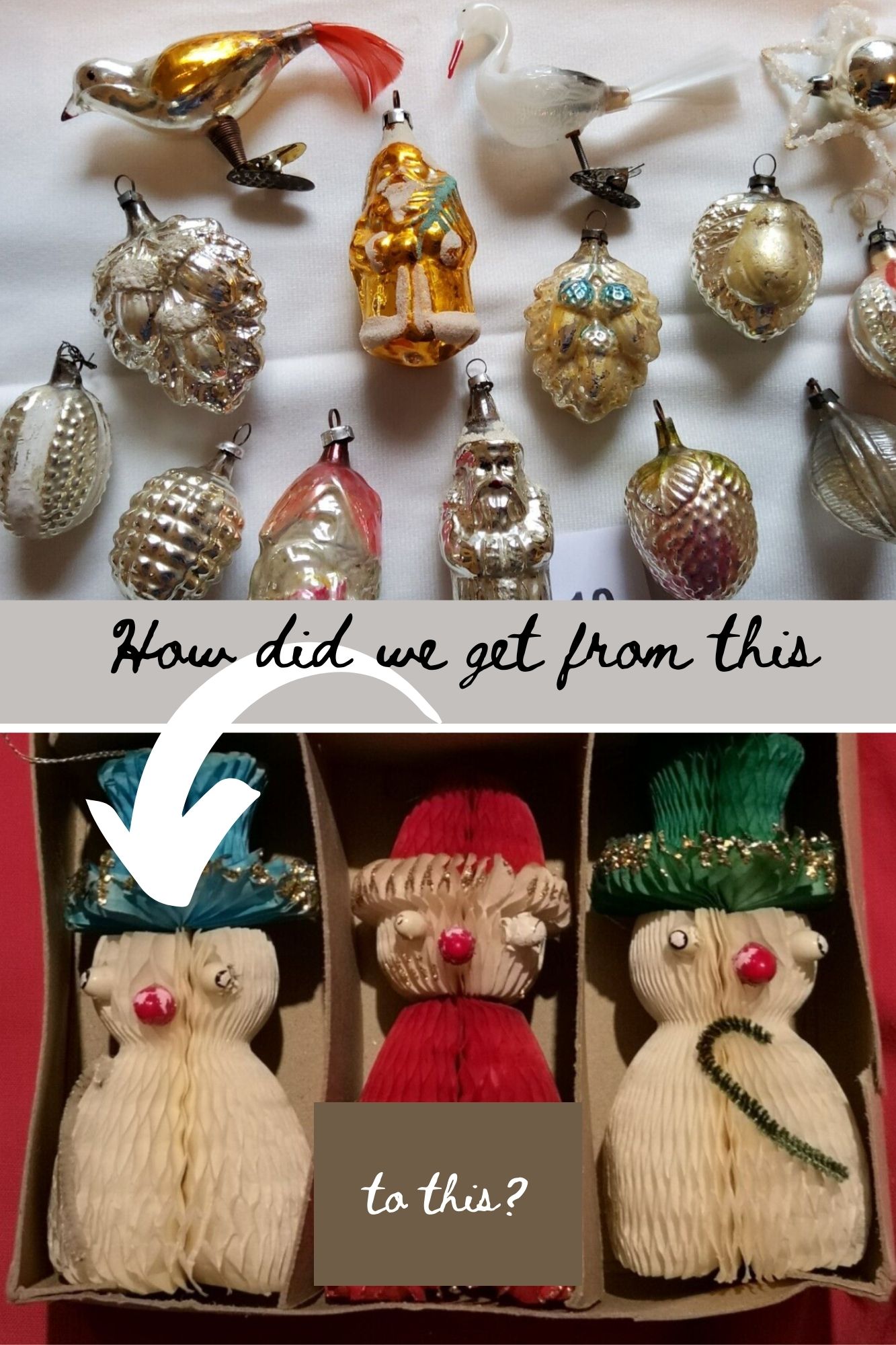
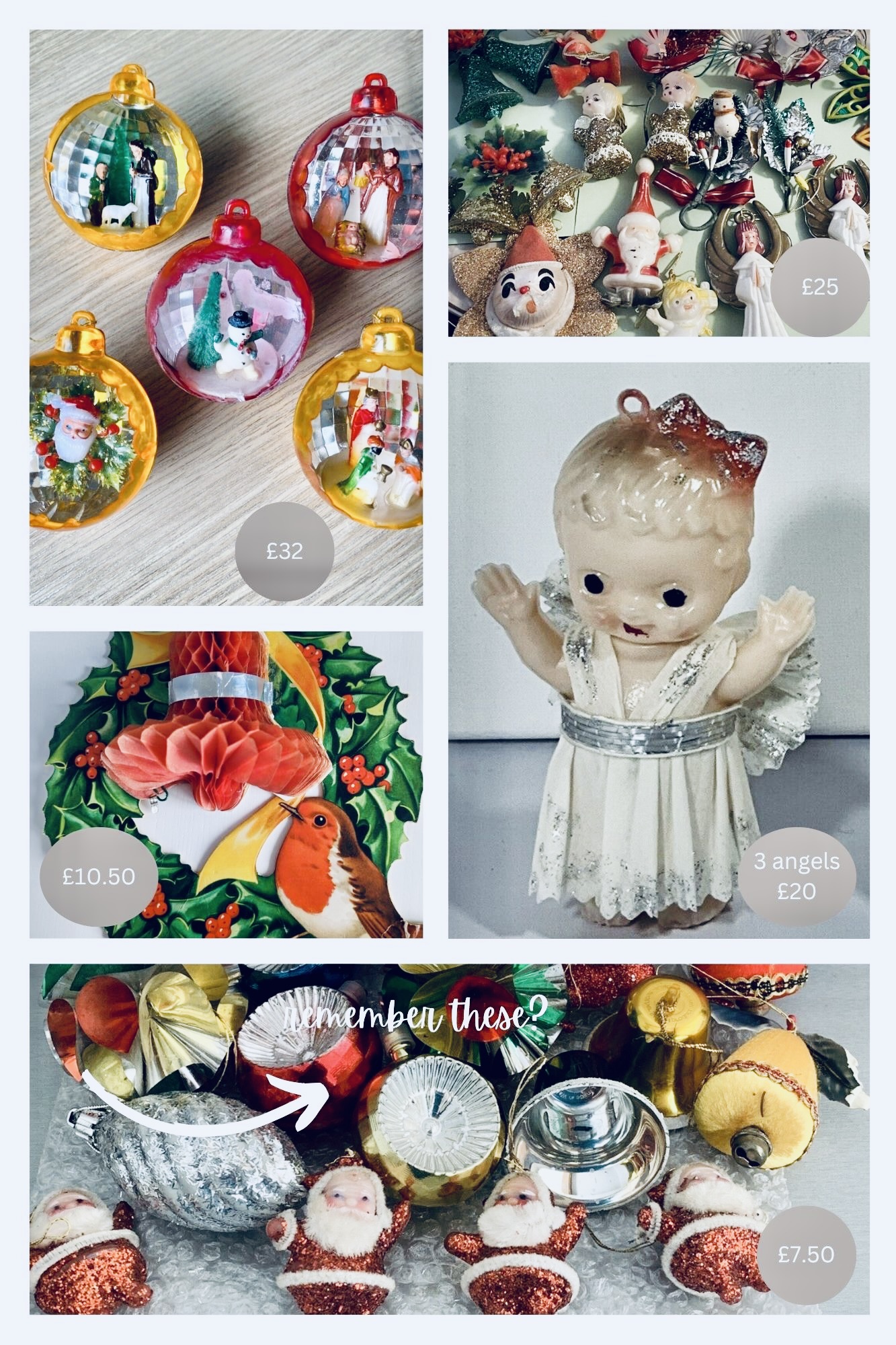
Bad kitsch;-
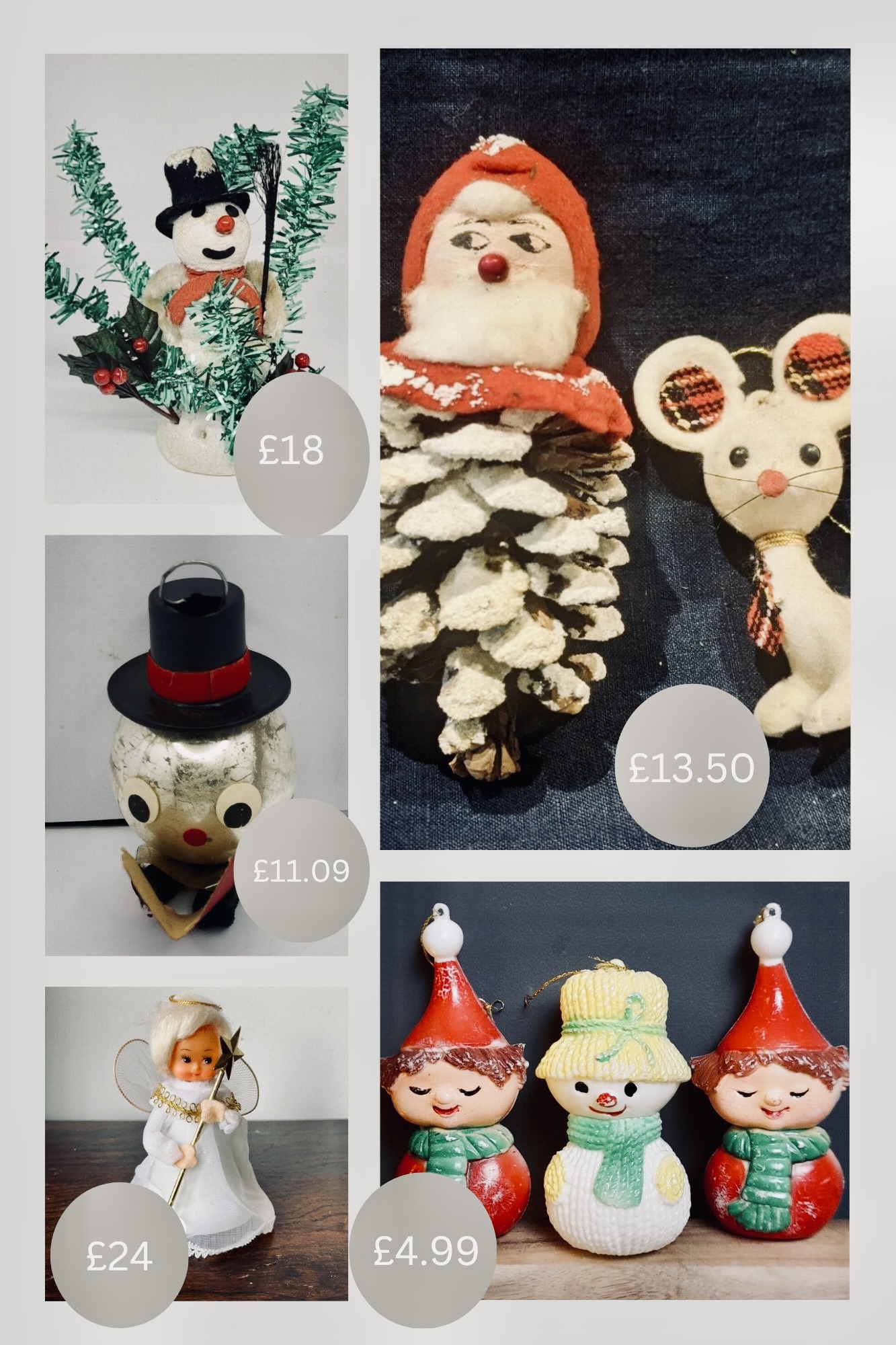
Personally, I’m not immune from the lure of ‘bad’ kitsch. I start the season determined to be tasteful – putting out some ‘French vintage’ sacking stockings, Scandi’ stars and a bit of greenery from the garden – but my inner ‘Buddy the Elf’ screams ‘MORE!’ and, by mid-December, the dancing Santas are out, again.
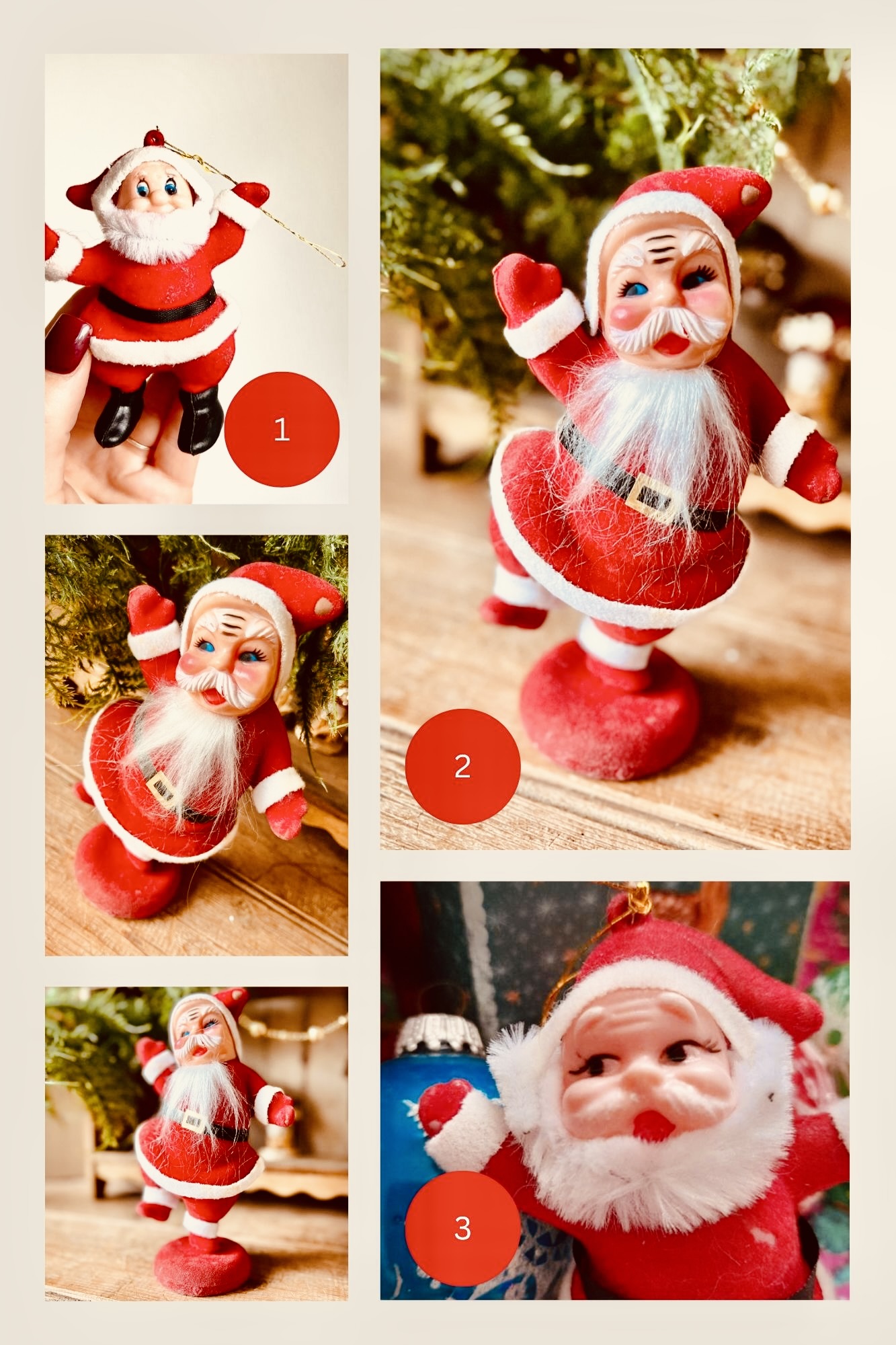
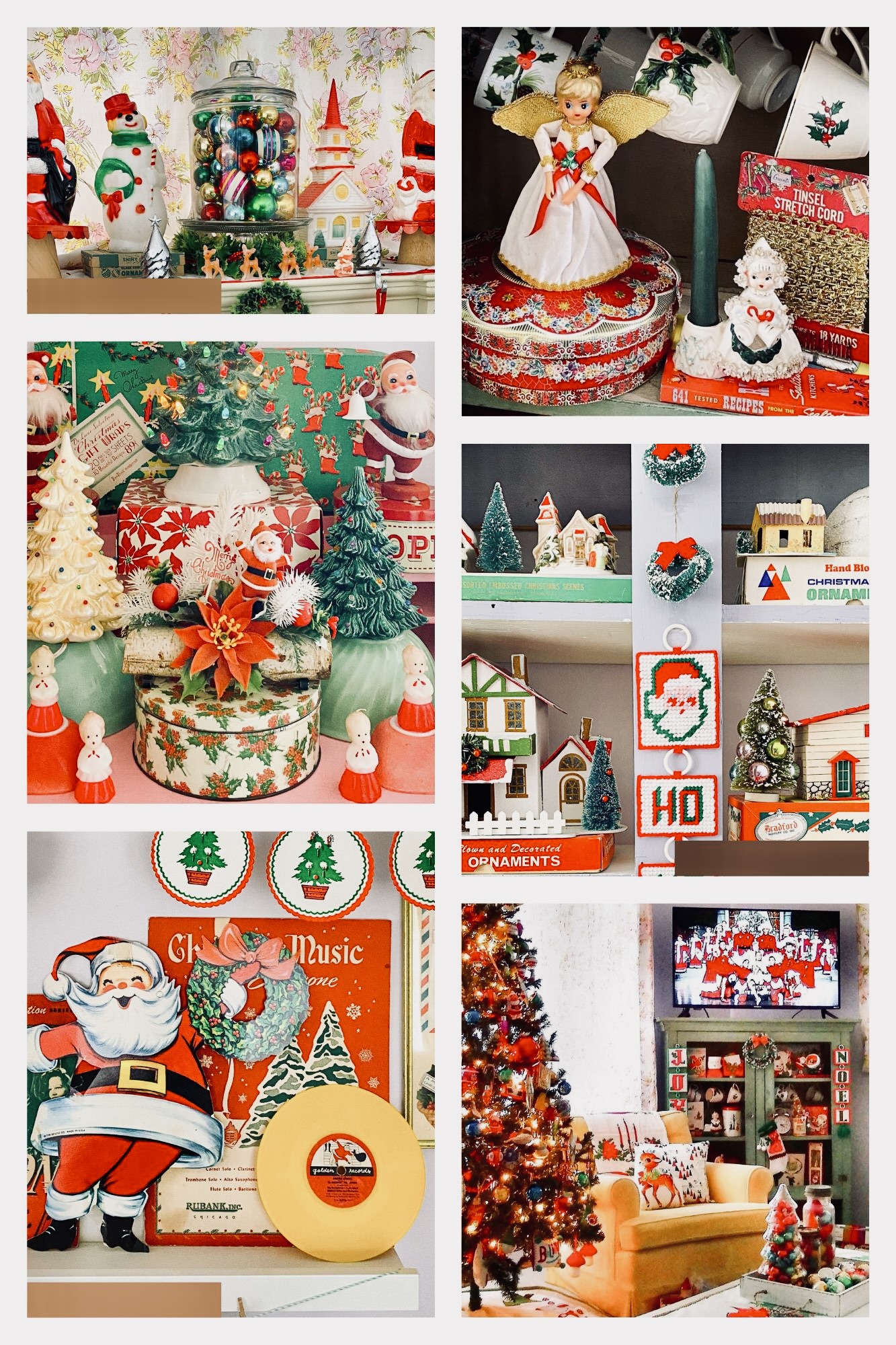
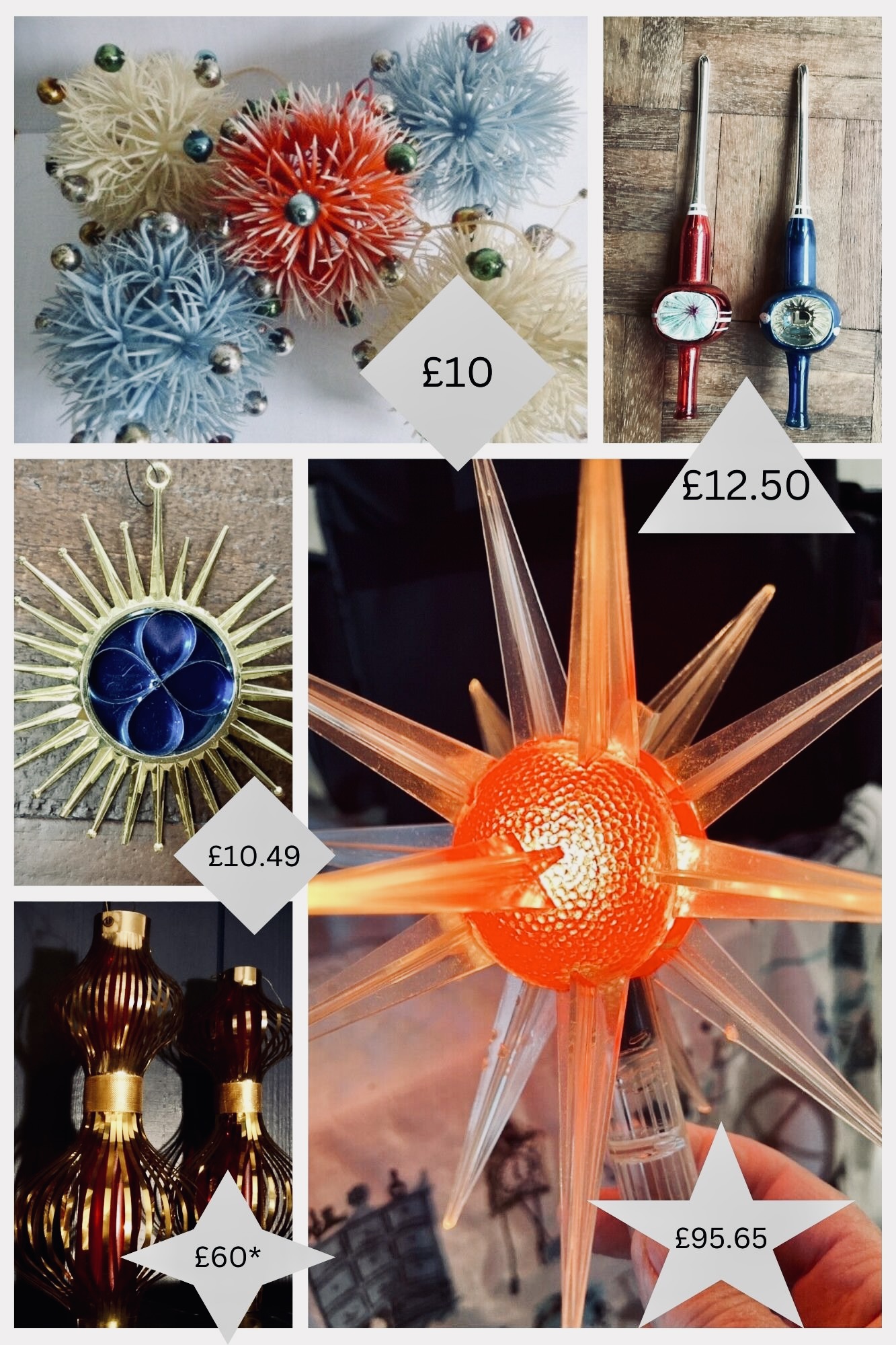
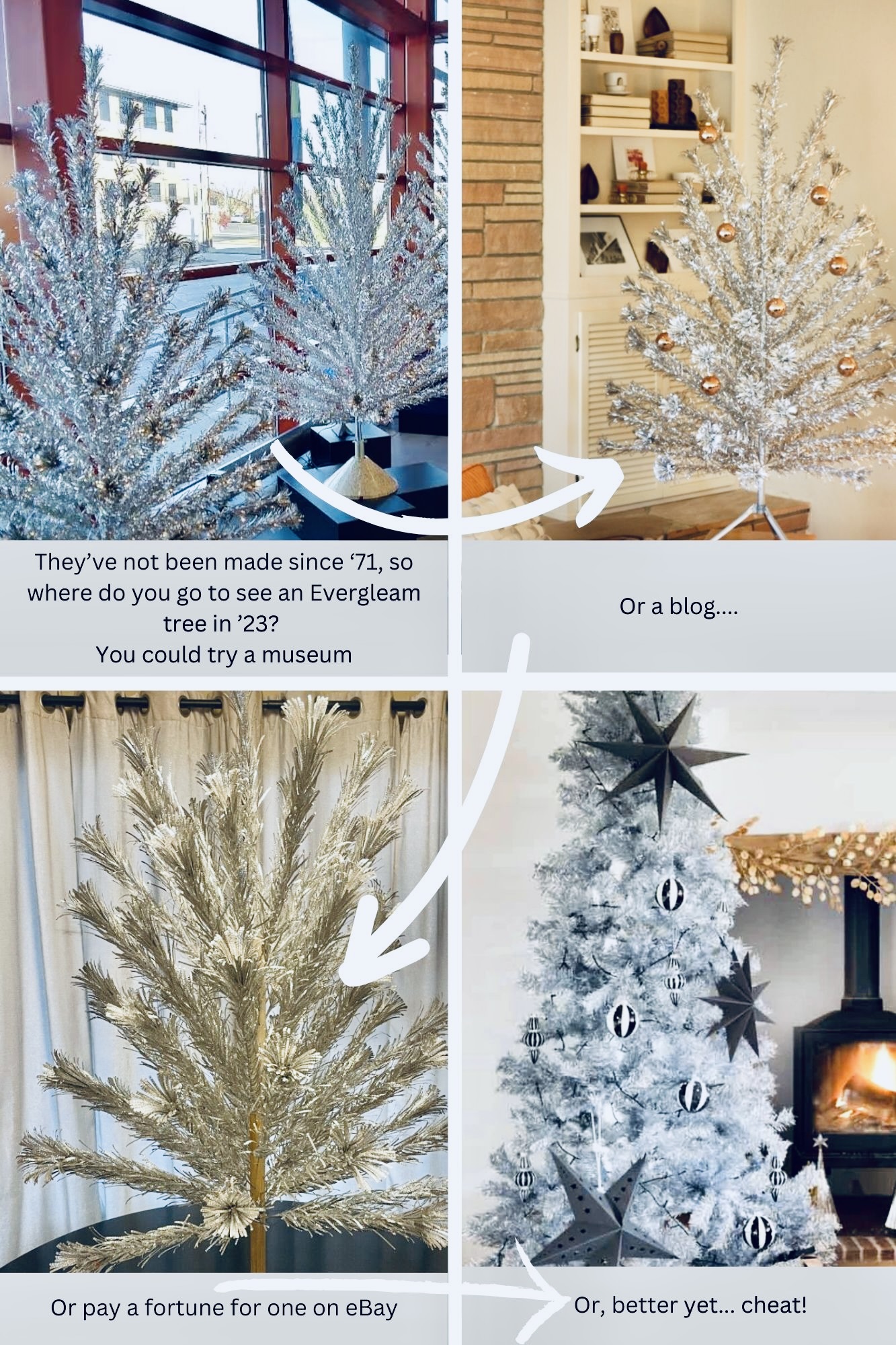
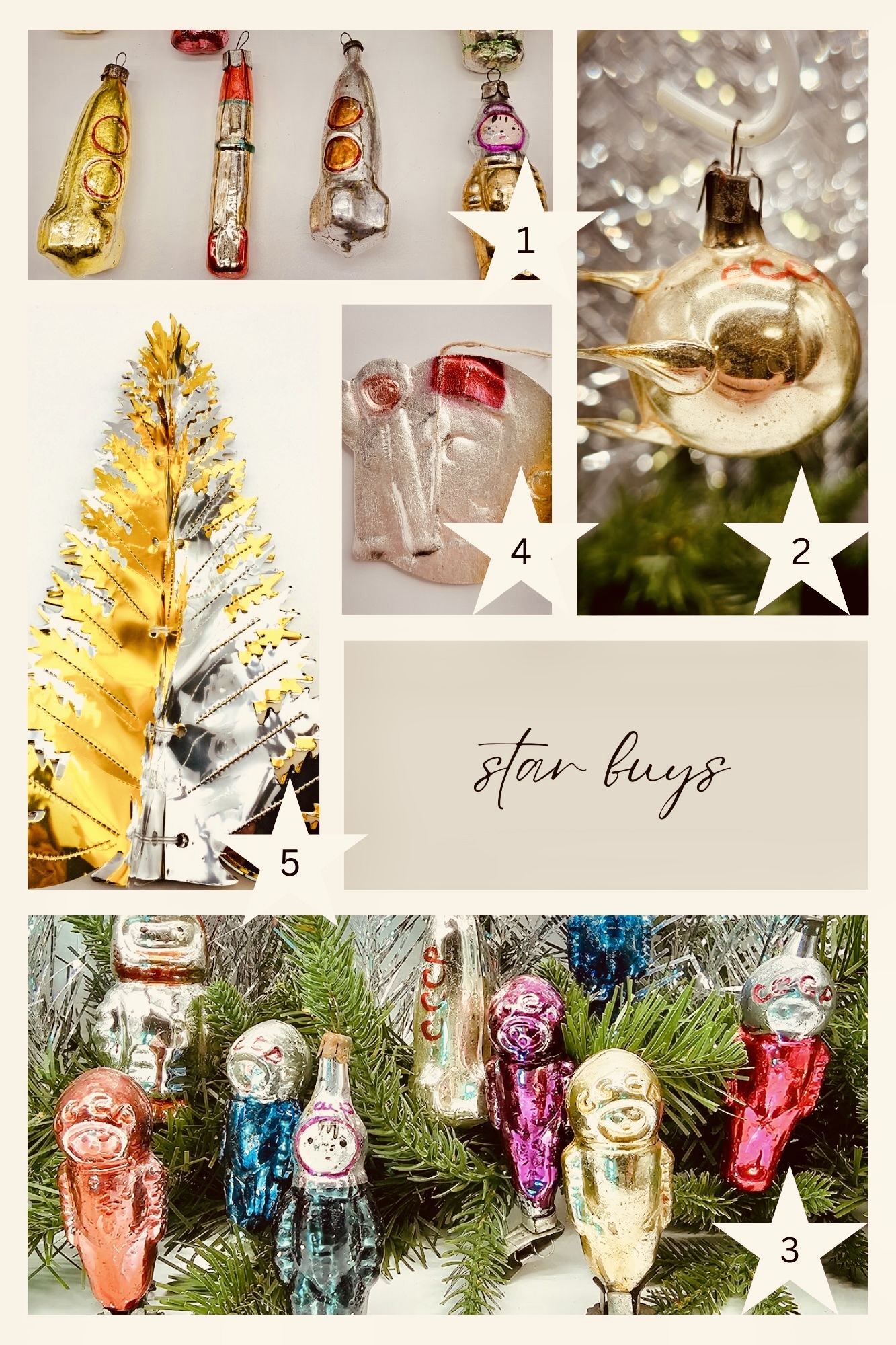
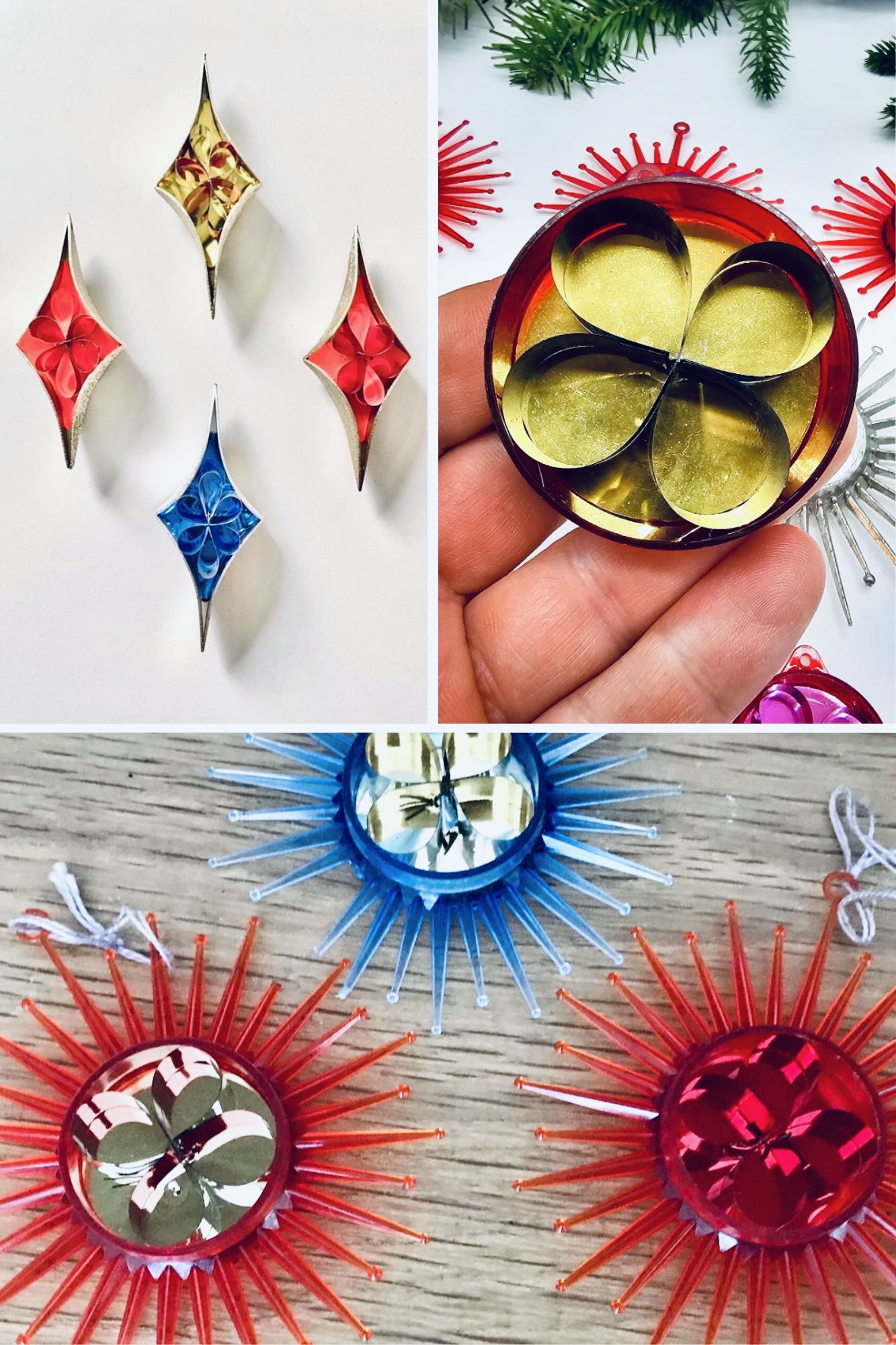
To finish, here’s some retro-inspired Christmas buys inspired by the categories above.
And who knows – they may just be the antiques of the future.



